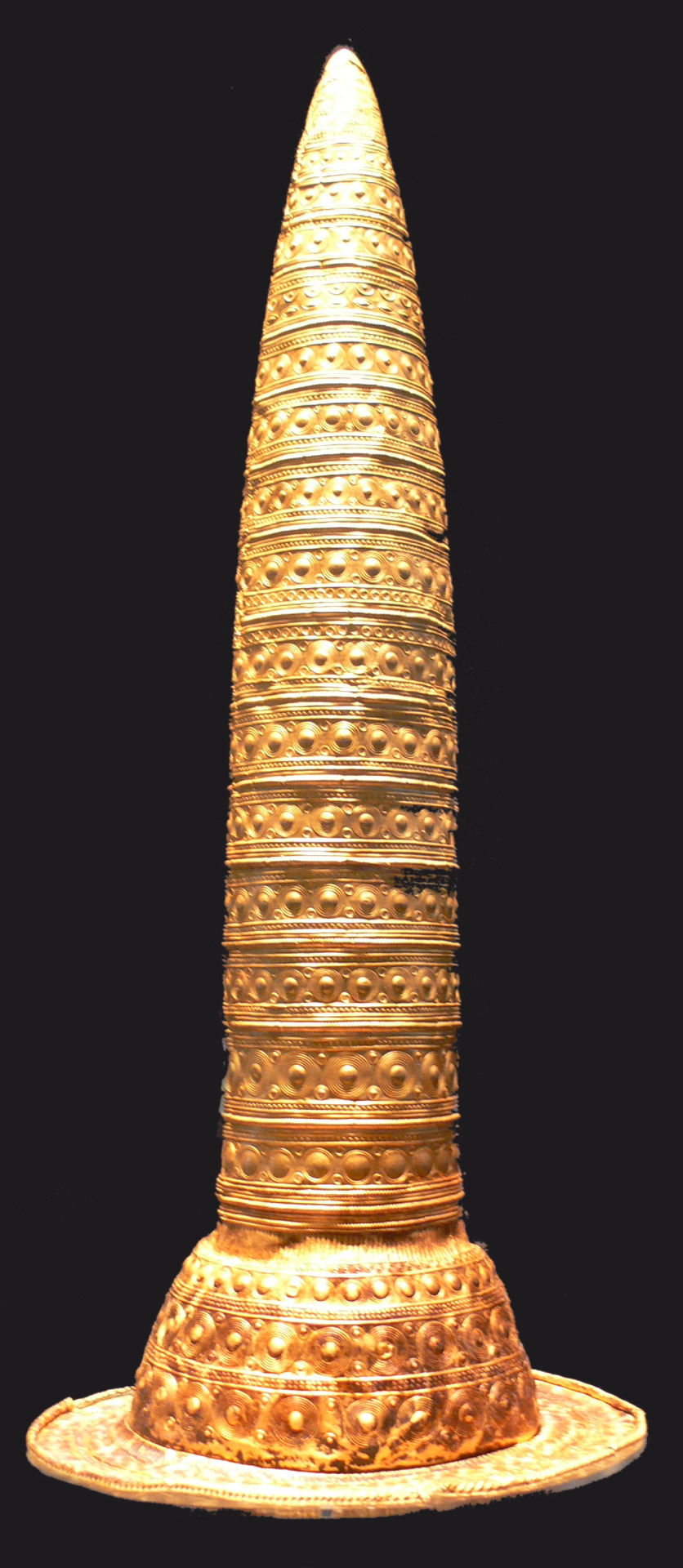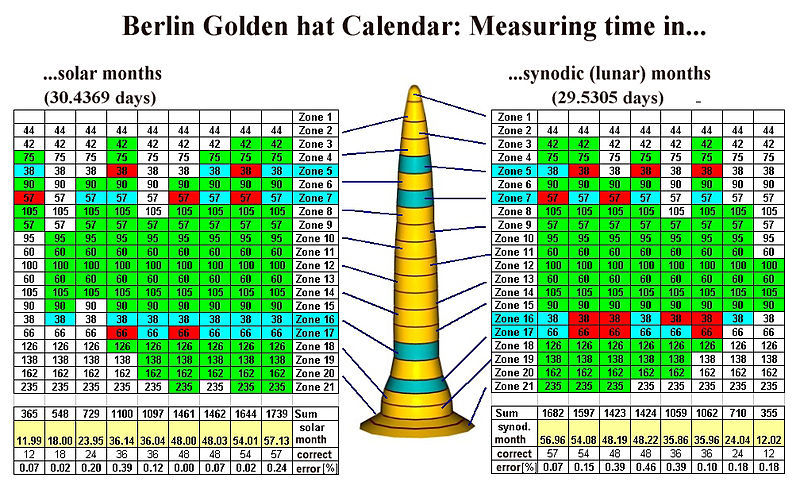читать дальше

The Berlin Gold Hat or Berlin Golden Hat (German: Berliner Goldhut) is a Late Bronze Age artefact made of thin gold leaf. It served as the external covering on a long conical brimmed headdress, probably of an organic material.
The Berlin Gold Hat is the best preserved specimen among the four known conical Golden hats known from Bronze Age Central Europe so far. Of the three others, two were found in southern Germany, and one in the west of France. All were found in the 19th and 20th centuries.
It is generally assumed that the hats served as the insignia of deities or priests in the context of a sun cult that appears to have been widespread in Central Europe at the time. [1].
The hats are also suggested to have served astronomical/calendrical functions (see below).
The Berlin Gold Hat was acquired in 1996 by the Berlin Museum für Vor- und Frühgeschichte as a single find without provenance. A comparative study of the ornaments and techniques in conjunction with dateable finds suggests that it was made in the Late Bronze Age, circa 1,000 to 800 BC.
